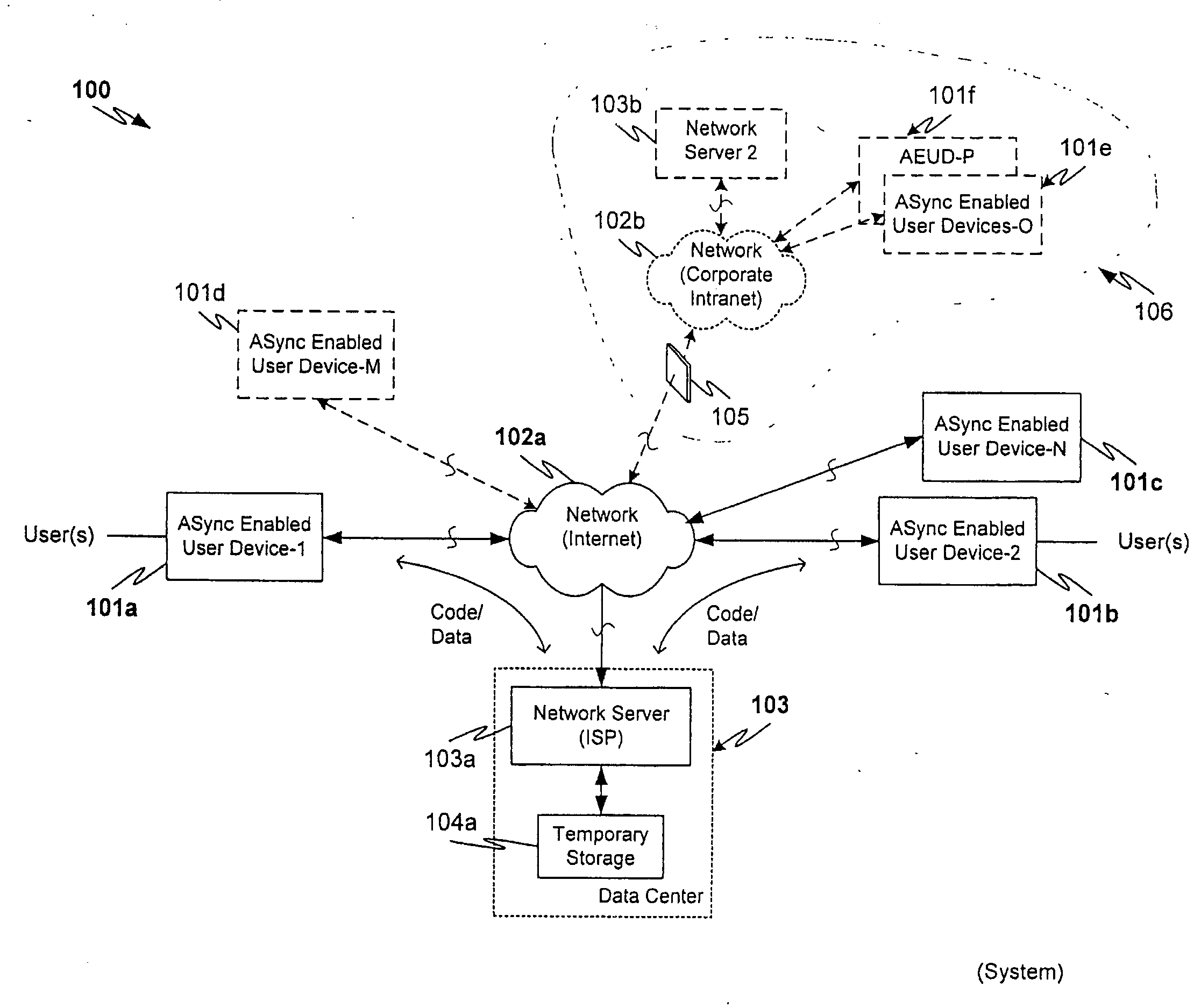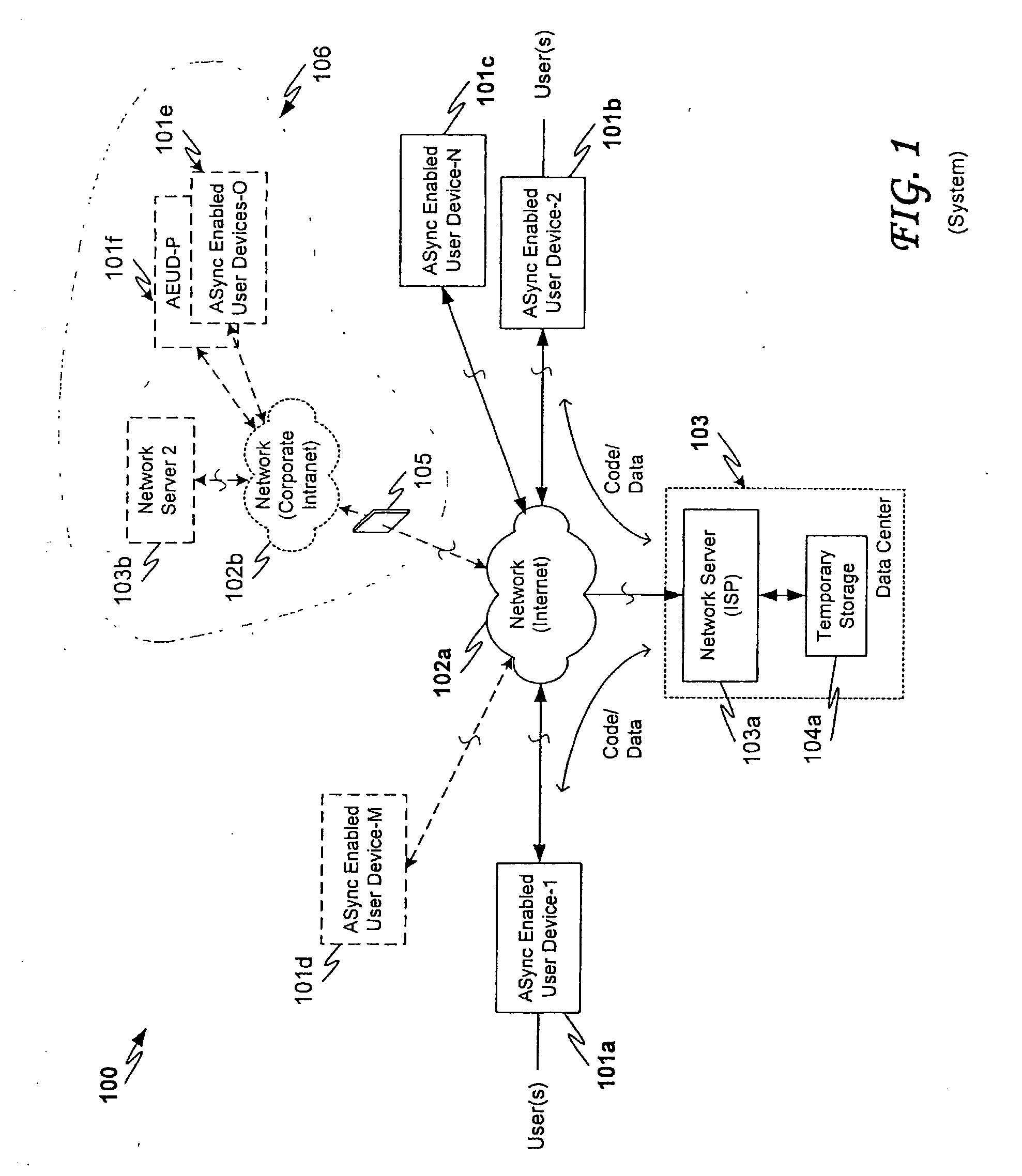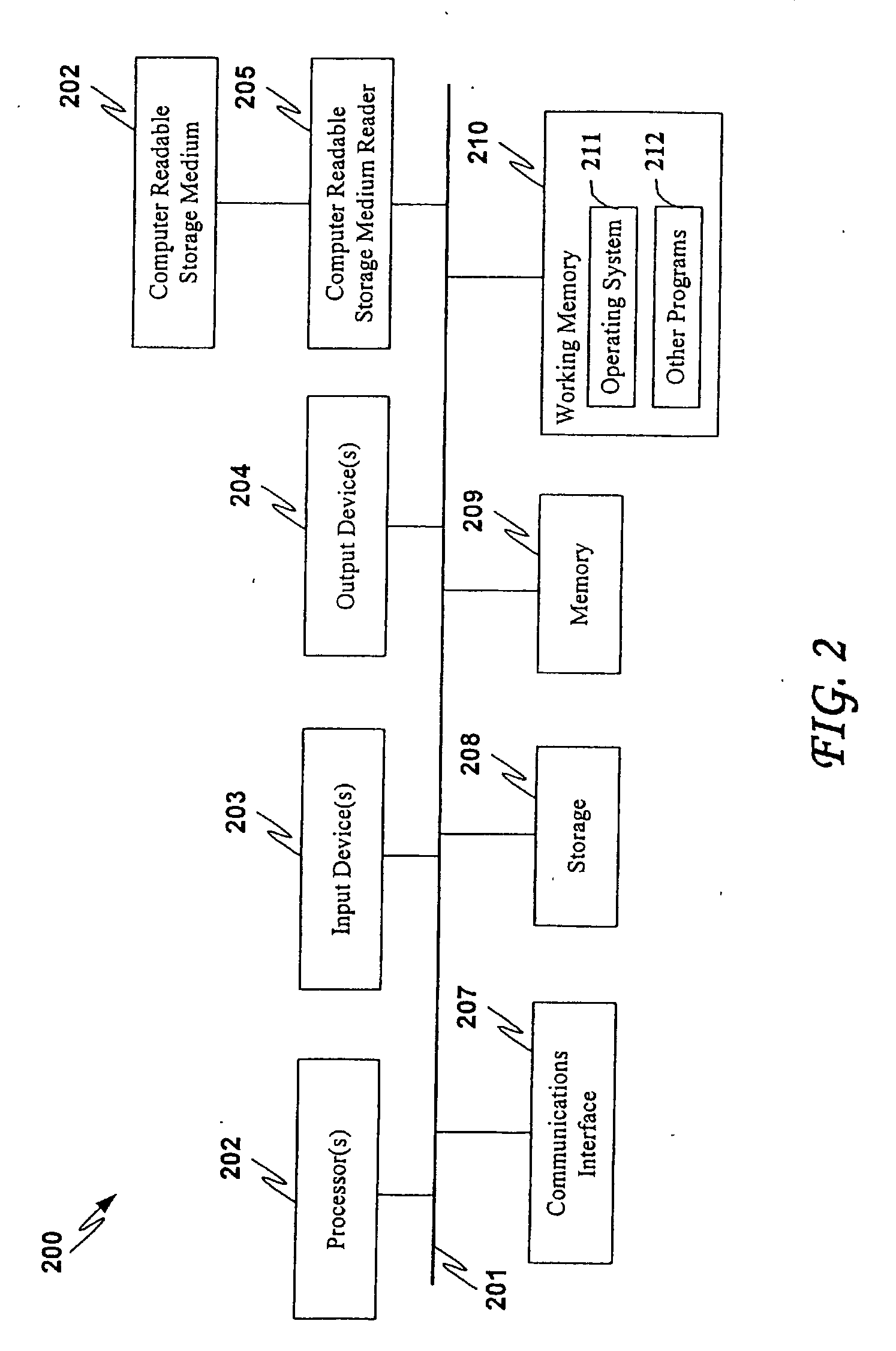System and methods for asynchronous synchronization
a synchronization and asynchronous technology, applied in the field of computer systems, can solve the problems of requiring substantial user device resources, and affecting the synchronization effect of the previous synchronization, so as to avoid the disadvantage of prior synchronization
- Summary
- Abstract
- Description
- Claims
- Application Information
AI Technical Summary
Benefits of technology
Problems solved by technology
Method used
Image
Examples
example 1
[0088]Case 1: If user device-2 receives the modification entered by user device-1 to element X and enters a modification to element X, then user device-1 will receive a message containing the twice modified element X having the version 1X1.
example 2
[0089]Case 2a: If instead user device-2 enters a modification to element X prior to receiving the modification by user device-1, then user device-1 will instead receive the once modified element X (by user device-2) having the version 0X1.
example 3
[0090]Case 2b: User device-2 will also later receive the message from device-1 containing the element X and the version 0X1.
[0091]The exemplary synchronization history map of FIG. 8 shows how history manager 602 (FIG. 6) of the synchronization engine of each user device further maintains each current synchronization state for all synchronizing user devices (e.g., user device-1 version stamp 812 and the user device-2 version stamp 813) for each synchronized workspace element prior to receiving a new message.
[0092](Other history map portions include hash values 814 for enabling record value comparison and change detection, and read-only flags 815 to enable change propagation to be inhibited where required. A history map can further include a synchronization state not specific to any record (not shown), such as the current message version stamp counter or the modified date to use as a cutoff when conducting a full change scan of a local database or other data space containing workspace...
PUM
 Login to View More
Login to View More Abstract
Description
Claims
Application Information
 Login to View More
Login to View More - R&D
- Intellectual Property
- Life Sciences
- Materials
- Tech Scout
- Unparalleled Data Quality
- Higher Quality Content
- 60% Fewer Hallucinations
Browse by: Latest US Patents, China's latest patents, Technical Efficacy Thesaurus, Application Domain, Technology Topic, Popular Technical Reports.
© 2025 PatSnap. All rights reserved.Legal|Privacy policy|Modern Slavery Act Transparency Statement|Sitemap|About US| Contact US: help@patsnap.com



